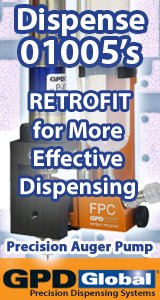Printed Circuit Board Assembly & PCB Design Forum
SMT electronics assembly manufacturing forum.
- SMTnet
- »
- Electronics Forum
- »
- Calculating Reflow Slope
Calculating Reflow Slope
![]() We currently use a KIC 2000 system to profile on our oven an...
- Oct 05, 2004
by
MLC
We currently use a KIC 2000 system to profile on our oven an...
- Oct 05, 2004
by
MLC
![]()
![]()
![]() Are you following solder paste manufacturer's spec?? I know ...
- Oct 05, 2004
by
friend
Are you following solder paste manufacturer's spec?? I know ...
- Oct 05, 2004
by
friend
![]()
![]()
![]() We are using the paste vendor's recommendations for TAL, pre...
- Oct 05, 2004
by
MLC
We are using the paste vendor's recommendations for TAL, pre...
- Oct 05, 2004
by
MLC
![]()
![]()
![]() We do not know how your KIC2000 calculates slope.
Here's ...
- Oct 05, 2004
by
davef
We do not know how your KIC2000 calculates slope.
Here's ...
- Oct 05, 2004
by
davef
![]()
![]()
![]() The sampling rate on the KIC software can be changed by the ...
- Oct 06, 2004
by
MLC
The sampling rate on the KIC software can be changed by the ...
- Oct 06, 2004
by
MLC
![]()
- SMTnet
- »
- Electronics Forum
- »
- Calculating Reflow Slope







